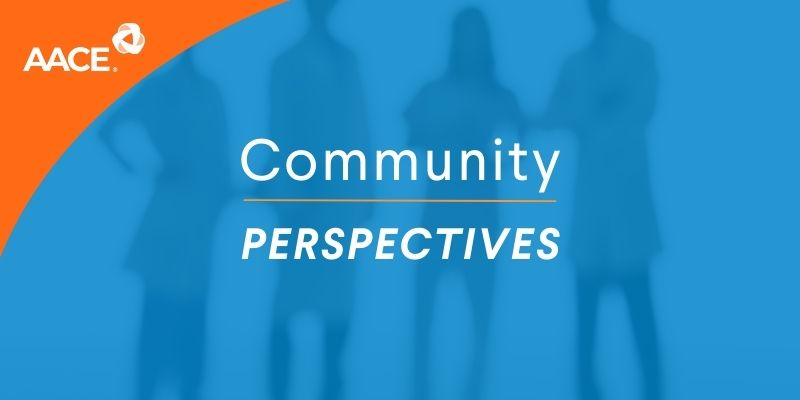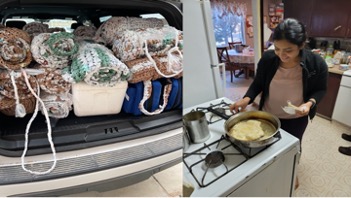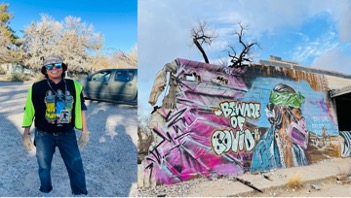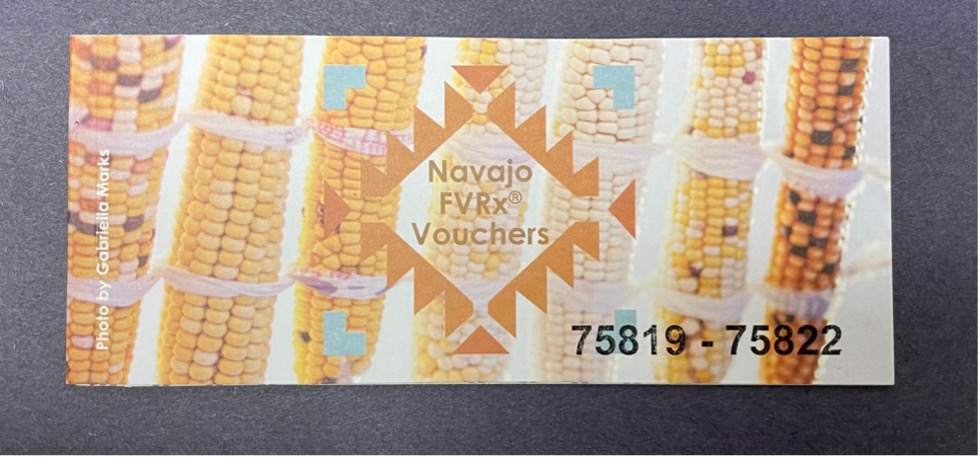
- Log in to post comments
Yá’át’ééh (Hello in Navajo)
I grossly underestimated the impact that the 4-week clinical rotation at one of the largest reservations in the nation, Navajo Nation, would have upon me when I responded to the email from AACE outlining the details of the Lewis Braverman grant. Having read about the high prevalence of gestational diabetes (GDM) and its complications in the American Indian/Alaska Native (AI/AN) population, I reached out to Dr. Howe (chief consultant of the division of OBG) at the Northern Navajo Medical Center (NNMC) in Shiprock, New Mexico, wanting to work with their high-risk patient population, learn from their care model that has come up with unique solutions to effectively deliver care, to understand patients’ cultural beliefs & practices that influence their medical care.
Navajo Nation is one of the three most densely populated areas with American Indians. It not only has a high prevalence of diabetes and its complications, but its geographical location and terrains further add to their woes making access to affordable and good quality food difficult. NNMC is the largest Service Unit within the reservation, serving as a referral center for many smaller health centers which are in even more remote areas of the reservation, providing health care for approximately 80,000 active patients. Despite the high prevalence of diabetes and its complications, there is not even a single endocrinologist in the area.
A few weeks later, I received a beautiful handwritten letter from Dr. Howe along with a book about a local woman’s journey of living with diabetes. It was probably the first handwritten letter I had received in years. Since that day, I have had the absolute pleasure of meeting and working with some of the kindest souls who made my time in Shiprock a memorable experience. I was welcomed by our Airbnb host and the town council member, Ms. Yazzie, who was a force to reckon with. She introduced me to her culture which she took immense pride in and even arranged a special cookout event where we cooked some local delicacies together.
I worked in their high-risk OB clinic & interacted with some of the inpatients with complex medical histories who needed an endocrine consultation. The majority of the patients seen in the clinic were young women in their 20s-30s and approximately 70-80% of them were suffering from complications of diabetes and/or obesity. A significant proportion of the patients were newly diagnosed with type 2 diabetes with frank hyperglycemia at their initial prenatal visit. The division employed an early screening protocol given the high rates of undiagnosed type 2 diabetes. With the help of Special Diabetes Programs for Indians (SDPI) eligible patients were provided with free CGMs.
There was resistance to the idea of using insulin and most women preferred oral medications. When I dived deep to understand the reasons behind this, most women shared anecdotes of family members being on insulin and still suffering complications from diabetes. I had the chance to work with Dr. Schifeling during one of the clinic sessions. She provided me with some meaningful insights into the cultural beliefs of the Navajo people influencing their medical decisions. She said that in the Navajo tradition, people believe that saying things makes them happen. It is probably easier for patients to say yes to insulin initially if the option had been posed as, "There are several ways to keep you and baby healthy during pregnancy and beyond. I know this may be a surprise, but I think insulin will be the best option for you" — that’s also a reframe from "we’re preventing high blood sugars and bad outcomes" to "we are making sure you have a good outcome." It was also important to let them know that insulin doesn’t cross the placenta as some traditional women, who still wanted prenatal care are okay with getting tested/treated for their pregnancy problems (hypertension for example) but are hesitant to test the baby in utero. This stuck with me! I have since had some of the most effective and engaging conversations in sync with my patients there and empowered them in their journey of diabetes.
Another common encounter during my stay was the difficulty women faced in accessing healthy food. The town just had one grocery store without many affordable options (most of the fresh produce needs to be sourced from faraway places as the climatic and topographical conditions are not conducive to locally grow these foods) but several fast-food joints. They developed innovative solutions like the fruit and vegetable prescription (FVRx) program to promote healthy birth outcomes for their patients in this limited resource "food desert." With the food vouchers, women could buy food at a reduced price from their local grocery store, which really benefitted the patients a lot.
I worked with Dr. Atwell while attending the Street Medicine clinic one day. We carried essential medications, clothes, vaccines, and food in our van, and drove to the areas in the town which struggled with homelessness. We met with a lot of people on the streets, listened to their stories, provided them with food and even vaccinated them against COVID-19.
With the help of my mentor, Dr. Brown (co-director, Joslin/BIDMC Diabetes in pregnancy program), I presented grand rounds — which was an hour-long rich discussion on their experiences taking care of this high-risk population, the burden of childhood obesity, diabetes in the area and strategies to improve care along with the latest evidence behind management of GDM. This was a profoundly humbling and gratifying learning experience. Apart from learning from the physicians at NNMC, I also learned a lot from the Navajo people. I was able to experience first-hand how patient-centered and culturally sensitive endocrine care can lead to better health outcomes and a sense of fulfillment. I will forever be grateful to AACE.
A'he'hee (Thank you in Navajo)
The Dr. Lewis E Braverman Endocrine Fellow in Training Educational Grant is a one-of-a-kind grant program offered to fellows in the United States to take part in unique clinical experiences worldwide.
Learn More and How to Apply

Shiprock (Navajo: Tsé Bitʼaʼí, "rock with wings" or "winged rock") is a monadnock rising nearly 1,583 feet above the high-desert plain of the Navajo Nation in San Juan County, New Mexico. Its peak elevation is 7,177 feet above sea level. The town is named after this formation. We experienced a snowstorm and a sandstorm during our stay there.

We carried blankets made from plastic shopping bags and other essentials to the people in need during our Street Medicine program. We cooked Navajo Frybread, which is a flat dough bread, fried or deep-fried in lard.

Our gracious Airbnb host and street art in the town of Shiprock, NM. With permission from Ms. Yazzie

Food vouchers from the fruit and vegetable prescription program (FVRx)

Login to leave a comment and join the conversation